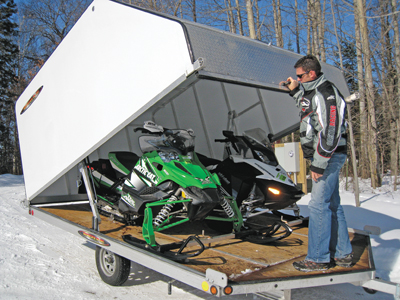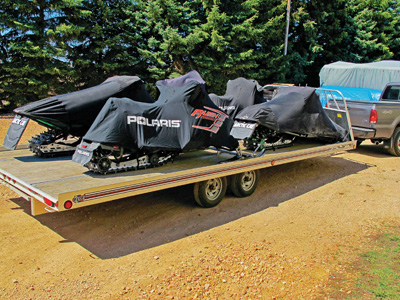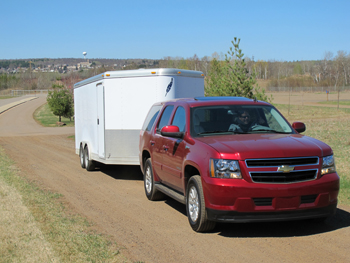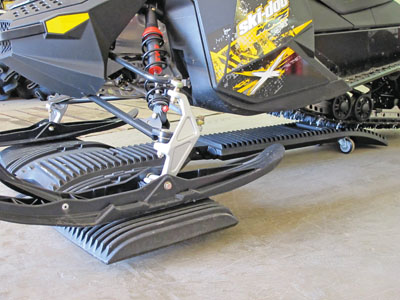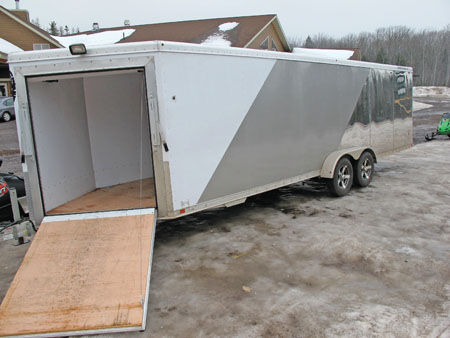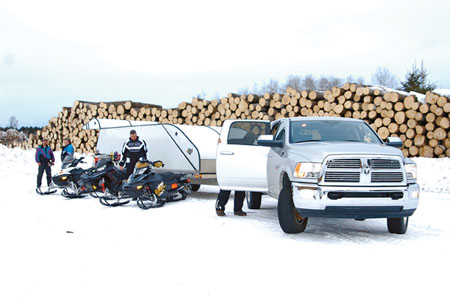Pickup truck sales have fallen more than 25 percent from 2008 levels, so there’s no room for error in today’s new vehicle introductions — every new model needs to be a hit as the financial wolves surround our wounded automakers. As the only American car company to avoid bankruptcy (thus far), Ford has enjoyed many years of light truck sales dominance with its F-150, the company’s most important product.
With an all-new platform for 2009, the wildly popular, F-150 is a big deal — and updating it required balancing between innovation and familiarity. Last winter, we spent some time behind the wheel for a full test of Ford’s latest hauler, including commuting, light work and towing.
Refreshing its bestseller required more than new bodywork and reshaped plastics, so the engineers started from the ground up. Its end result is a design that’s clearly familiar and evolutionary, sticking with what works. This new F-150 received countless accolades, suggesting Ford will retain its market dominance in the light truck department.
With a new look atop a new chassis, is it enough of an update to keep the truck as the country’s best-seller despite being outgunned in horsepower?
More Choices
While there are more packages than ever — the new Platinum package is the top tier — our test truck was the venerable mid-range XLT Supercab with a sampling of extras.

Our test truck was never meant for future sale, so the window sticker and build sheet that accompanied it did not include pricing.
The missing information allowed us to test and configure our truck online at Forddirect.com. Matching the F-150 4×4 Supercab’s packages and options as best we could, the $32,260 base price grew to an as-tested total of $37,865. Our options list included an XLT Convenience Package with power accessories, the tailgate step and bed extender and the premium sound system inside with six-disc changer, the SYNC system and satellite radio.
Our interior was configured with a 6-passenger capacity and a 40/20/40 front seat, but putting three adults in the rear extended cab might subject the doer to hate crime prosecution. The rear doors, like other extended cabs, are opened only when the front doors are ajar, making wide-parking spaces a necessity to maintain easy access, despite the 90-degree rear door swing. Even a toddler in a booster seat felt cramped behind the driver’s seat when adjusted to accommodate a 6-foot-tall driver comfortably.
Extended cabs remain popular configurations for versatility and added box cargo volume. The Supercab F-150 we tested had the more-popular 6.5-foot cargo bed, but a longer wheelbase and 8-foot bed is available.
Any configuration of the latest F-150 rides on a new stiffer frame as the backbone of a new chassis that allows better fuel economy, improved safety and additional towing and payload capacity.
We had the largest and most-powerful engine available for the F-150: the Triton 5.4-liter flex-fuel capable V-8 rated at 310 hp. It was mated to Ford’s 6-speed automatic with a more economical, final drive axle of 3.31:1. There is a 3.73 axle option for greater towing capacity (up to 11,300 pounds), but as equipped our test truck was rated for 8,300 pounds.
12 Free Tanks Of Fuel
The switch to the 6-speed automatic transmission gained, according to Ford, a one mile per gallon improvement in mileage. It might not sound like much, but in an ownership life of 100,000 miles the improvement from 15 mpg to 16 mpg is about 12 full tanks of fuel from our optional 36-gallon tank.
The six-speed upgrade comes from more efficient operation from drive ratios, which range from the 4.17:1 first gear to the second overdrive gear, sixth, with a 0.69:1 ratio. Like other late-model five- and six-speed transmissions, there isn’t a 1:1 drive in the gear set.
The low first gear made it easy for the truck to pull away from a stop when towing. The wide gearing ratio put to rest some of our on-paper fear of its severe, 60-ish horsepower deficit to some of its competitors. The truck drives stout and feels overbuilt by comparison to other half-ton trucks. It’s tight, without a single rattle, shake or hollow sound.

Our largest snowmobile trailer loaded with four machines was no more than 5,500 pounds and hardly a match for its 8,300 pound capacity, so we also pulled a 27-foot trailer boat in excess of 7,000 pounds to give the truck a tougher workout. It handled both loads so well we wished we could have kept the F-150 in place of the 2005 F-250 V-10 Super Duty in our truck fleet. Other than pulling torque, the F-150 towed more comfortably, quieter, more efficiently and as confidently as our Super Duty.
While towing the heavy boat we observed 7.7 mpg. While the transmission worked well to maximize engine power, we felt the power disadvantage. The engine was in peak power much of the time. Though the truck never felt overworked or that we were asking too much of it, it was easy to distinguish that it carried less under the hood from other half-tons towing the same load.
During our snowmobile trailer towing test we observed 10.9 mpg. It wasn’t obscene, but we expected better. While we would expect to achieve better towing performance (and mileage, perhaps) with the 3.73 axle ratio, it would come at the expense of mileage during normal driving where the F-150 redeemed itself. Our overall non-towing, observed mileage was 16.2 mpg.
The Right Compromise
Competitive pressure and rising consumer expectations created a new F-150 after just four years on the previous platform. Though the F-150 is disadvantaged in power, it’s uncompromising in other places: payload and towing capacities are winners and the options list is longer than ever.
Rising fuel costs triggered a rapid downsize of light truck sales, but the F-150 remains the most important vehicle in the Ford showroom. And because fuel mileage is critical in today’s purchase decision, the power disadvantage is something we’re willing to forgive if it improves mileage.

